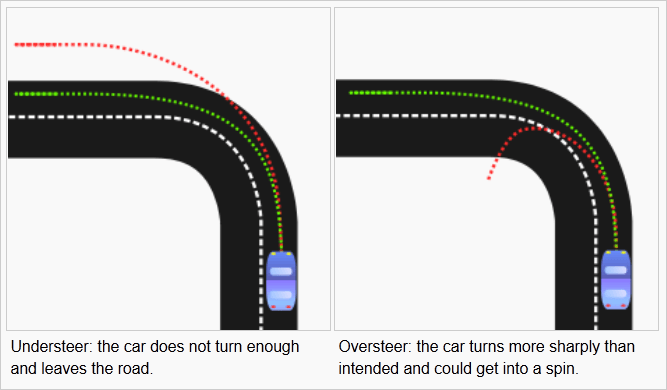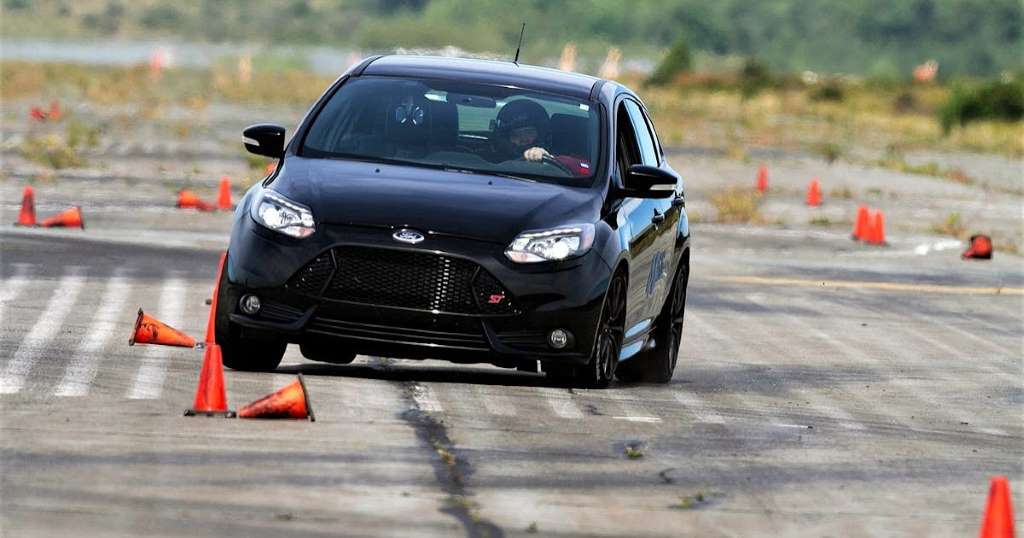Both understeer and oversteer are terms related to vehicle dynamics. They refer to the sensitivity of an automobile to its steering. If you want to understand oversteer vs understeer differences, you should first know what actions these terms refer to.
Contents
What are Understeer and Oversteer?
The simplest definition of understeer could be it occurs when a car steers (turns) less than what the driver commands.
Oversteer is the turning of the car more than what the driver commands. These actions depend on the changes in steering angle and lateral acceleration.
Watch this video from Car Throttle to have a detailed explanation of these terms!
Oversteer vs Understeer
Whether a vehicle will oversteer or understeer mostly depends on whether it’s a front- or rear-wheel drive.
The first phenomenon is a characteristic of rear-wheel-drive vehicles while the second one occurs in case of front-wheel-drive cars.
However, both automobile types can experience both phenomena given the right conditions. These incidents generally happen when the car has a powerful engine.
For this reason, many newer models are equipped with an electronic stability control that kicks in when the vehicle starts to slide.
SEE MORE:
Difference Between Understeer and Oversteer
To understand the oversteer vs understeer concept, check the table below. It will clear your confusion and help you to get a clear idea about these occurrences.

| UNDERSTEER | OVERSTEER |
| It means lack of grip. When this happens, the driver will have little response from the steering wheel. | It happens when the front side of a vehicle has more grip than the back side. It makes the car spin when driving into a corner. |
| It takes place when the vehicle’s front wheels begin to plow straight despite turning the steering wheel. | Oversteer is the result of the rear end of a car being fishtailed or sliding out. |
|
|
|
|
| Applying more suspension or increasing the front wing can minimize understeer. Tire pressure adjustment also helps sometimes. | You have to do the opposite to fix this problem. You have to loosen the suspension or downforce to drop the grip. |
FAQs on Oversteer vs Understeer
-
Which is more dangerous, oversteer or understeer?
Both oversteer and understeer can be dangerous, but the severity of the situation depends on the driver’s skill and the circumstances.
Oversteer can be more challenging to control, as it can lead to a spin if not managed properly.
Understeer may result in a wider turn or running off the road but is often considered easier to correct by easing off the throttle and steering into the turn.
-
Are certain types of vehicles more prone to oversteer or understeer?
The tendency toward oversteer or understeer can vary depending on the vehicle’s design and drivetrain.
Rear-wheel-drive sports cars are more prone to oversteer, while front-wheel-drive cars tend to exhibit understeer characteristics.
All-wheel-drive vehicles may have a more neutral balance but can still experience oversteer or understeer in certain situations.
-
Can oversteer and understeer be beneficial in motorsport or performance driving?
In motorsport and performance driving, controlled oversteer can be used for drifting or making a car rotate quickly in tight corners.
However, excessive oversteer or understeer can lead to loss of control and compromise lap times. Skilled drivers use these characteristics to their advantage but always aim to maintain control.

-
How can I prevent oversteer and understeer when driving?
Preventing oversteer and understeer involves driving within your car’s limits, maintaining proper tire pressure, and avoiding abrupt steering or throttle inputs.
Choosing the right tires and adjusting your driving style to road and weather conditions can also help reduce the risk of these handling issues.
-
Are there any safety features in modern cars that help mitigate oversteer and understeer?
Many modern cars come equipped with electronic stability control (ESC) systems that can help prevent oversteer and understeer.
ESC can selectively apply braking to individual wheels and modulate engine power to help the driver maintain control in challenging situations.
-
Can tire choice affect oversteer and understeer tendencies?
Yes, the type and condition of tires can significantly affect a car’s tendency towards oversteer or understeer.
Performance tires with good grip can enhance handling and reduce these characteristics, while worn or mismatched tires can exacerbate them.
Conclusion
Understanding the differences between oversteer vs understeer is crucial for drivers to navigate turns safely and effectively.
Oversteer occurs when the rear wheels lose traction, causing the car to rotate more than desired, while understeer happens when the front wheels lose grip, leading to a wider turn than intended.
Both oversteer and understeer can be managed with the right skills and techniques, but they can also pose dangers if not corrected promptly!



